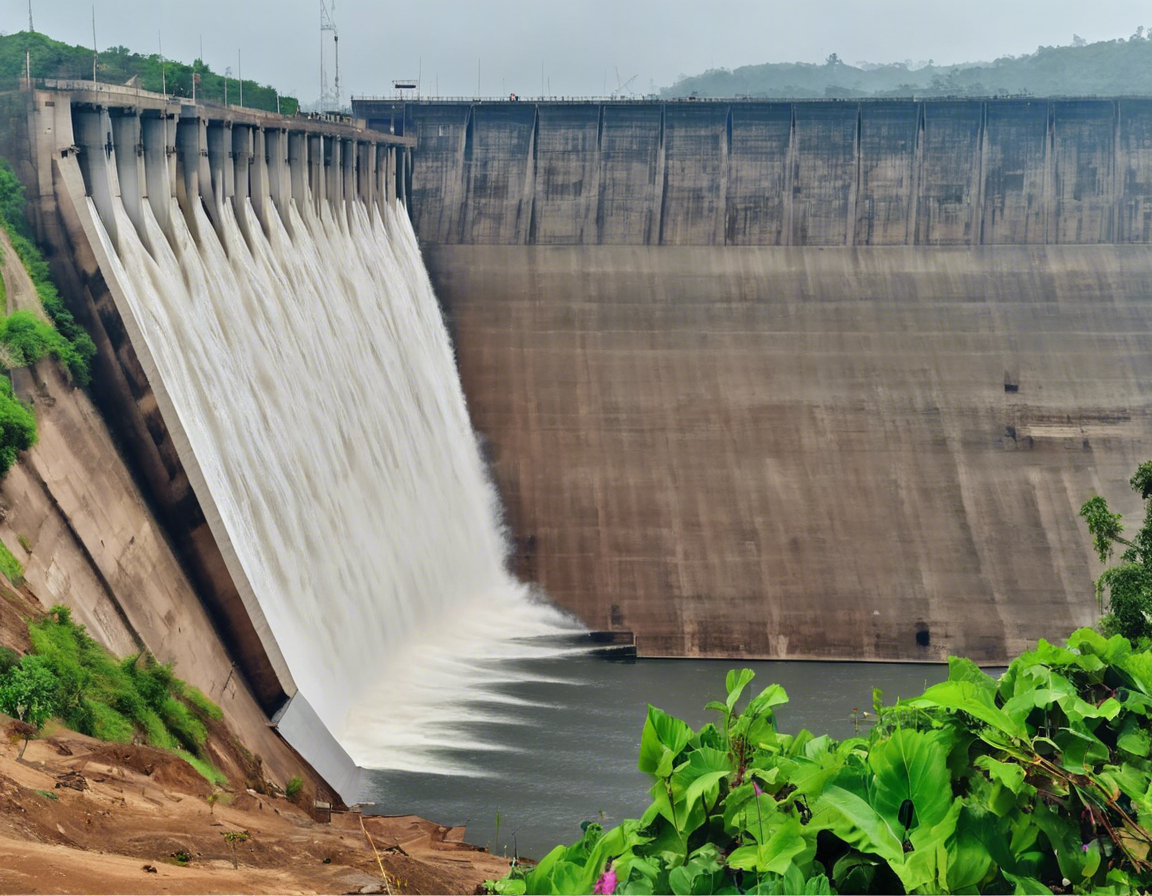Introduction
Koyna Dam, one of the largest dams in Maharashtra, India, plays a crucial role in water supply, irrigation, and hydroelectric power generation for the region. The current water level of the Koyna Dam is a matter of great importance as it directly impacts the water availability for various purposes. As of the latest update, the water level at the Koyna Dam stands at TMC 2023 (Thousand Million Cubic Feet).
Importance of Monitoring Water Levels
Monitoring water levels in dams is essential for effective water resource management. It helps in assessing the availability of water for irrigation, drinking water supply, hydropower generation, and other needs. By tracking water levels regularly, authorities can take timely actions to prevent water scarcity, flooding, or any adverse impacts on the environment.
Factors Affecting Koyna Dam Water Level
Several factors influence the water level of the Koyna Dam:
-
Precipitation: The amount of rainfall in the catchment area directly affects the inflow into the dam, thereby impacting the water level.
-
Release of Water: Controlled release of water for irrigation, hydropower generation, or downstream needs can lead to fluctuations in the water level.
-
Evaporation: High temperatures and dry weather conditions can result in water loss due to evaporation, causing a decline in the water level.
-
Dam Maintenance: Periodic maintenance activities or repairs on the dam structure can temporarily affect the water level.
Impact of Water Level on Different Sectors
The water level of the Koyna Dam has a significant impact on various sectors:
-
Agriculture: Adequate water supply is essential for agricultural activities in the region. Farmers rely on the dam water for irrigation purposes, especially during dry spells.
-
Hydropower Generation: The Koyna Dam is a vital source of hydropower, and the water level determines the electricity generation capacity of the dam.
-
Drinking Water Supply: The water level directly affects the availability of drinking water for nearby towns and villages. Low water levels can lead to water scarcity issues.
-
Ecology: Maintaining water levels is crucial for preserving the ecological balance of the region, including aquatic life, vegetation, and biodiversity.
Monitoring and Management
To ensure efficient monitoring and management of the water levels at the Koyna Dam, the following measures are typically undertaken:
-
Real-time Monitoring: Installation of sensors and gauges to track water levels continuously and provide real-time data to authorities.
-
Forecasting: Weather forecasting and hydrological predictions help in anticipating changes in water levels and planning accordingly.
-
Regulatory Measures: Implementing regulations for water use, release, and conservation to maintain optimal water levels.
-
Emergency Preparedness: Developing contingency plans for handling water level fluctuations, emergencies, or extreme weather events.
Frequently Asked Questions (FAQs)
1. What is the average water level at the Koyna Dam?
The average water level at the Koyna Dam varies throughout the year, with fluctuations based on seasonal rainfall and water demand. It is typically maintained at a level that ensures optimum water storage for multiple purposes.
2. How does the water level at the Koyna Dam impact agriculture?
The water level at the Koyna Dam directly affects agricultural activities in the region by influencing the availability of water for irrigation. Farmers rely on the dam water for crop cultivation, especially during the dry season.
3. Is the water level at the Koyna Dam stable throughout the year?
The water level at the Koyna Dam is subject to fluctuations based on factors like rainfall, release of water, evaporation, and maintenance activities. It may vary seasonally and in response to changing water demands.
4. What measures are taken to manage water levels at the Koyna Dam?
To manage water levels effectively, authorities undertake measures such as real-time monitoring, forecasting, regulatory actions, and emergency preparedness. These efforts help in maintaining optimal water levels for various purposes.
5. How does the water level at the Koyna Dam impact hydropower generation?
The water level at the Koyna Dam directly affects the hydropower generation capacity of the dam. Lower water levels can lead to reduced electricity production, impacting the region’s power supply.
In conclusion, monitoring and managing the water levels at the Koyna Dam are critical for ensuring sustainable water use, meeting the region’s diverse needs, and preserving the ecosystem. Regular assessment, timely interventions, and informed decision-making are essential to maintain water levels at optimal levels for long-term water security and wellbeing.
